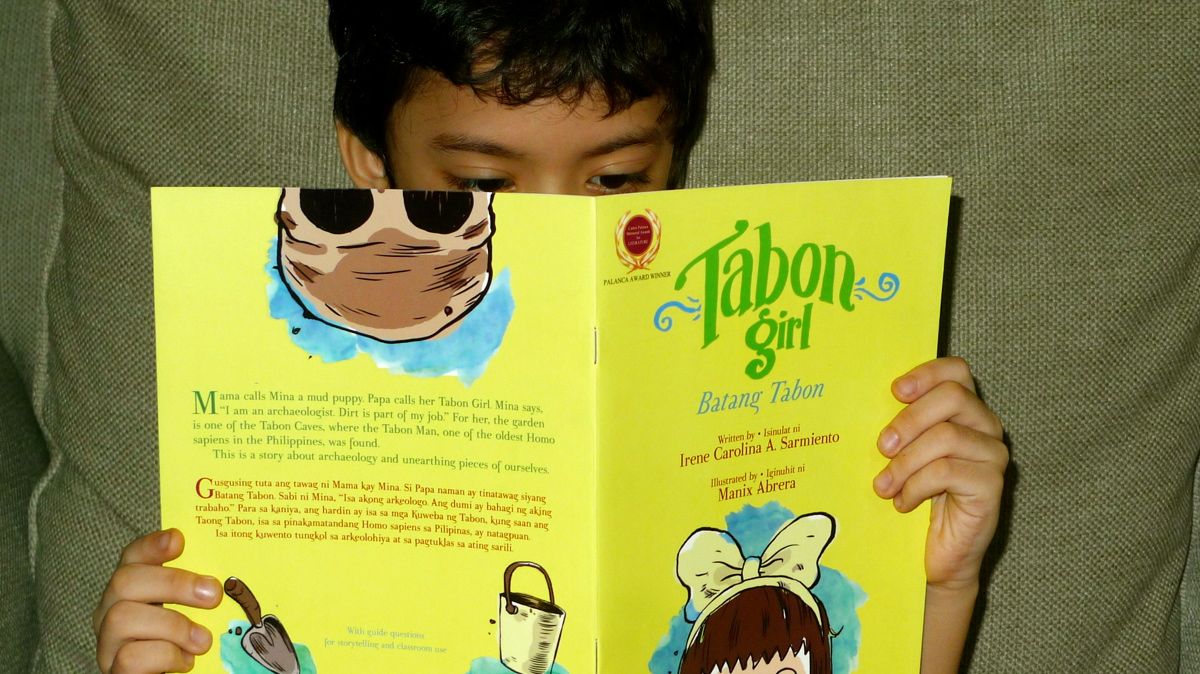SUMMARY
This is AI generated summarization, which may have errors. For context, always refer to the full article.

MANILA, Philippines – It’s almost predictable: Little boys find their way to the world of dinosaurs.
The obsession is seen in many children as they talk about their favorite beasts, store trivia and immerse in the subject matter in every available media.
I’ve seen it first hand with several little boys, and heard similar stories many times over.
This exposes an opportunity for a wider context: The prehistoric age, where after the dinosaurs, life evolved.
It is a significant angle to latch on if you are a Filipino parent of a dinosaur-loving child.
See, there were no dinosaurs in the Philippines. None we knew of, anyway — no signs of any having lived on our islands.
There were, though, the Tabon Man and the Tabon cave.
And this is where our journey begins.
See and hear
Luckily, there are various ways of localizing the prehistoric topic for the little Pinoy.
However, it may take a little effort and some side commentary (by a parent, older sibling or any other adult) to make the information kid-friendly.
It’s not a stretch. Take for instance The Diorama Experience at the Ayala Museum.
Granted, the diorama displays an impressively comprehensive take on the history of the Philippines, which may be a bit overwhelming for a little child. But spend a few extra minutes at that very first frame: there, see the first Filipino.
Listen to the accompanying recording that explains the scene. A tip: Listen with the child so you can expound on the more difficult ideas, or (at the vey least) arm yourself with the knowledge so you can help feed the little mind sufficiently.
If the child has a budding interest in history (especially if Araling Panlipunan classes have been touching on heroes and patriotic stories), explore the rest of the display.
You have a solid starting point; now, put it in context.
Watch and learn
At the Mind Museum, there is one enticing feature: A reconstructed fossil of the famous dinosaur, the Tyrannosaurus Rex.
The huge skeleton is remarkable, especially for the wide-eyed kid who has been dreaming of seeing one with the naked eye. Around it, there are various displays of fossils — including dino poop! That will surely elicit a chuckle or two.
At appointed times, a film showing is conducted. Two films in 3D talk about the evolution of the world: The first presents the global view; the second brings it to local shores.
Did you know, for instance, that Palawan used to be part of the Asian plate? And that it drifted millions of years ago, southwards, until it found its present location?
Knowing that, it makes sense to find signs of prehistoric man in one of its caves. What about other signs of prehistoric life? Maybe, just maybe, dinosaurs could have lived here?
What if? Let your kid think of possibilities. Nourish that sense of wonder.
Read and imagine

At home, reading is an easy, simple and rewarding activity to do when exploring and engaging this subject matter.
It’s just a matter of finding the right materials.
Certainly, there are many published books on dinosaurs, fossils, prehistoric creatures and other related topics. Some are amazing in their presentations: pop-up books, movable parts, maps, journals and other imaginative formats.
It was an exciting discovery, then, to learn that a local children’s book was recently released that falls squarely in the sphere of the subject matter.
Tabon Girl is about Mina, a little girl who spends her days digging.
She pretends to be an archaeologist, digging in the garden, looking for treasures. She doesn’t care to be clean and claims that “dirt is part of my job.”
Mina’s Papa calls her “Tabon Girl” because she loves learning about the Tabon Caves. Mina wants to find her own Tabon Man (or Woman).
It is a light read that is able to integrate many concepts: The prehistoric background of the Philippines, some gender issues and relationships among family members.
The author, Irene Carolina Sarmiento, does this deftly, without sounding condescending to her young audience or alienating them with highly technical jargon.
It’s also bilingual — the story is told in English and Filipino.
Sarmiento shares, “I wanted to follow [my first book] up with something that was more ‘national’ in terms of its scope. I had long been thinking about writing something that was more connected to the land. I wrote the story about a year before I officially became an OFW, and I can relate to it in a sense that it involves searching for one’s roots and identity.”
The story is charming, but also factual. Sarmiento actually consulted with Vito Hernandez of the Archaeological Society of the Philippines “who became a very important resource person. He even put me in touch with National Museum’s Dr. Bong Dizon, who was there during the Tabon Caves excavations.”
Sarmiento lives in the US now and, in fact, flew in just to launch her book last month.
She leaves not just with a book to enjoy but with a tip: The Archaeological Society of the Philippines had arranged a “sandbox archaeology” activity for the kids who attended her book launch.
Now, why didn’t any of us think of that? – Rappler.com
Add a comment
How does this make you feel?
There are no comments yet. Add your comment to start the conversation.